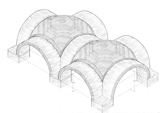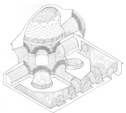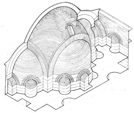Masons at Work
Nikolaos Karydis
University of Notre Dame

Nikolaos Karydis
University of Notre Dame
Limiting the Use of Centering in Vault Construction: The Early Byzantine Churches of West Asia Minor
The break with the tradition of the timber-roof basilica and the passage to vaulted construction has been one of the most intriguing developments of the Early Byzantine period. A crucial question concerning this development regards the degree to which the emergent vaulting technology required the use of centering. The recent graphic reconstruction of a series of Early Byzantine churches in west Asia Minor, such as St. John and St. Mary at Ephesos, Building D at Sardis, and St. John at Philadelphia sheds new light on this problem. The study of the exposed inner layers of these dilapidated monuments makes it possible to visualize their vault structure in detail. Reconstruction reveals a wide variety of vault forms and brick patterns characterized by the setting of bricks in corbelled, ‘pitched’ or ‘arched’ brick courses. This paper investigates the degree to which these techniques can be attributed to the need to limit the use of timber formwork. The author also explores the origins of these techniques and the duration of their use. A wide range of later monuments suggests that these seemingly idiomatic building techniques developed into a building tradition with a lasting influence on church architecture in the region.


